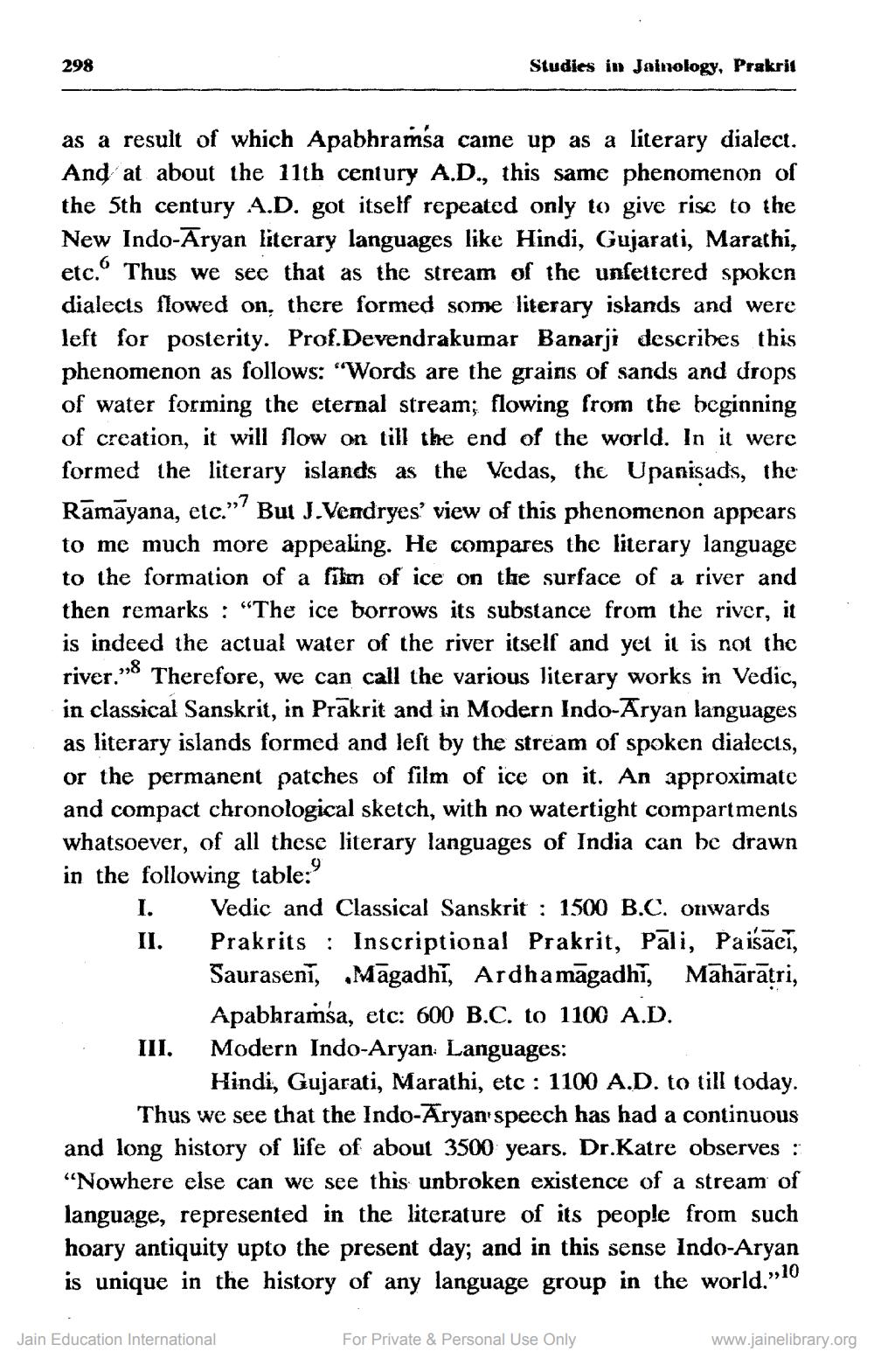________________
298
Studies in Jamnology, Prakrit
as a result of which Apabhramsa came up as a literary dialect. And at about the 11th century A.D., this same phenomenon of the 5th century A.D. got itself repeated only to give rise to the New Indo-Aryan literary languages like Hindi, Gujarati, Marathi, etc. Thus we see that as the stream of the unfettered spoken dialects flowed on, there formed some literary islands and were left for posterity. Prof.Devendrakumar Banarji describes this phenomenon as follows: "Words are the grains of sands and drops of water forming the eternal stream; flowing from the beginning of creation, it will slow on till the end of the world. In it were formed the literary islands as the Vedas, the Upanisads, the Rāmāyana, etc."? But J.Vendryes' view of this phenomenon appears to me much more appealing. He compares the literary language to the formation of a film of ice on the surface of a river and then remarks : "The ice borrows its substance from the river, it is indeed the actual water of the river itself and yet it is not the river." Therefore, we can call the various literary works in Vedic, in classical Sanskrit, in Prakrit and in Modern Indo-Aryan languages as literary islands formed and left by the stream of spoken dialects, or the permanent patches of film of ice on it. An approximate and compact chronological sketch, with no watertight compartments whatsoever, of all these literary languages of India can be drawn in the following table:
I. Vedic and Classical Sanskrit : 1500 B.C. onwards II. Prakrits : Inscriptional Prakrit, Pāli, Paisacī,
Saurasenī, Māgadhi, Ardhamāgadhi, Maharātri,
Apabhramsa, etc: 600 B.C. to 1100 A.D. III. Modern Indo-Aryan Languages:
Hindi, Gujarati, Marathi, etc : 1100 A.D. to till today. Thus we see that the Indo-Aryan speech has had a continuous and long history of life of about 3500 years. Dr.Katre observes : “Nowhere else can we see this unbroken existence of a stream of language, represented in the literature of its people from such hoary antiquity upto the present day; and in this sense Indo-Aryan is unique in the history of any language group in the world."10
Jain Education International
For Private & Personal Use Only
www.jainelibrary.org




